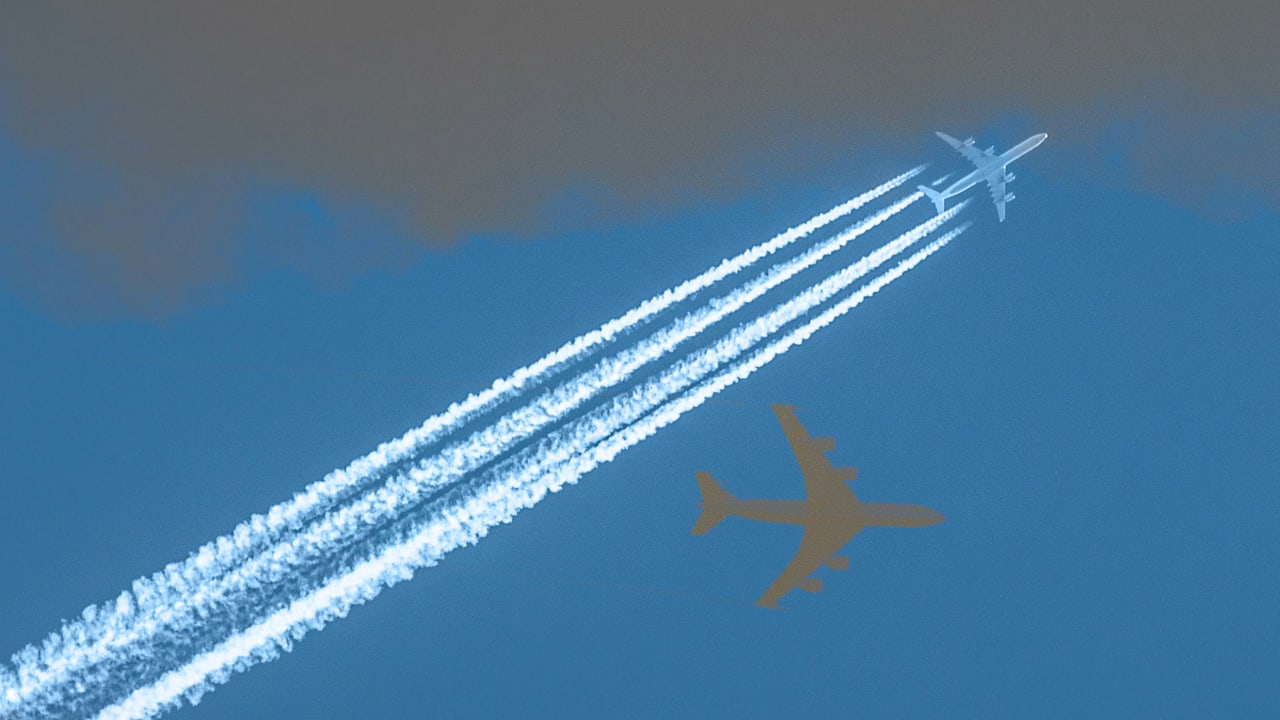3 ways to avoid flying on a Boeing 737 Max
If you’re leery of flying on a Boeing plane, you are not alone. Search for “Boeing” on TikTok or Reddit or X (formerly Twitter), and you’ll find thousands of people with similar fears. Those fears stem from the spate of media reports of incidents on Boeing planes since the beginning of the year, most infamously the one on January 5, when Alaska Airlines Flight 1282 lost a door after takeoff. The plane was a Boeing 737 Max 9. It wasn’t the first time a Boeing 737 Max made the news for all the wrong reasons. In October 2018, a Boeing 737 Max 8 aircraft crashed in Indonesia minutes after takeoff, killing 189. Five months later, another Boeing 737 Max 8 crashed, in Ethiopia, killing 157. News of the Alaska Airlines incident raised the specter of these previous crashes as well as a new round of anxiety about flying on Boeing planes. That anxiety has only increased in the months since as problem after problem has continued to occur with the company’s aircraft. Regardless of whether these incidents are all really as bad as they seem, the constant media focus on Boeing’s failures is understandably making some frequent flyers apprehensive of stepping onto a Boeing 737 Max. But if you’re one of them, there is some good news: there are several tricks and tools you can use to avoid flying on one—though there is also one significant limitation to these methods, too. How to avoid flying on a Boeing 737 Max plane There are various ways you can avoid flying on a Boeing 737 Max plane—but each takes a little work. The first is to know your airline. Or, rather, know which airlines have Boeing 737 Max’s in their fleets. Flight travel engine Alternative Airlines has put together a list of global carriers that aren’t currently deploying 737 Max planes. In the U.S., this list is pretty much limited to the smaller airlines, including Avelo, Frontier, Hawaiian, JetBlue, Spirit, and Sun Country. Allegiant Air was on the list but will begin receiving 737 Max’s this year. Alternative Airlines also notes that Delta does not yet fly the 737 Max, though it’s got the aircraft on order for 2025. However, larger U.S. airlines that have 737 Max’s in their fleets don’t use these planes exclusively. So it’s still possible to fly on most airlines without being guaranteed you’ll be put on a 737 Max. That’s why the second step to avoiding flying on a Boeing 737 Max is to get familiar with reading the details of search results on popular travel websites. Take Google Flights, for example, which is one of the most popular flight-comparison tools in the world. When you enter your search on Google Flights and browse through the results, you can see if the flight you are considering is using which aircraft. In the search result, click on the drop-down arrow next to any leg of your trip, and, below the arrival time, you’ll see the make and model of the plane. If it’s a plane you don’t want to fly on, simply look for an alternative flight using an aircraft that is acceptable to you. Still, this method relies on you manually checking the type of plane for each leg of your trip. That’s why the third option might be best: use a flight search engine that allows you to exclude flights on specific types of aircraft from appearing in your search results. There are a few that do this. One is Kayak. In January, the company updated its flight tools to allow you to quickly exclude certain types of aircraft from your search results. On Kayak’s results page, simply scroll down and click the “Model” header. Next, just choose to exclude any flights from the search results that include a plane you don’t want to fly on. For example, a Boeing 737 Max. There’s another flight search engine that makes it even easier to exclude Boeing 737 Max’s from your search results.Search on Alternative Airlines’ Boeing alternatives page, and the results you see will automatically exclude flights on Boeing 737 Max planes. (If you use Alternative Airlines’ search tool from another page on the site, 737 Max’s will be included in the result, but you can manually choose to hide those flights or the flights on other types of planes.) Alternative Airlines’ head of customer acquisition and SEO, Marc Agate, tells me that “since the beginning of the year, we have seen an increase of 118% in users—recording just over 80,000 in March—who are specifically looking for non-Boeing flights.” Be warned: You may still end up flying on a 737 Max Unfortunately, even using these previously mentioned methods is no definitive guarantee that your flying future is Max-free. That’s because airlines can and frequently do swap out planes on the day they’re scheduled to depart, due to scheduling or maintenance issues. What this means is that even if you’ve made sure to book your flight on, say, an Airbus, the airline may end up having to put you on a Boeing 737 Max, or some other plane, anyway. If airlines weren’t able to swap out planes, there would be even more delays and

If you’re leery of flying on a Boeing plane, you are not alone.
Search for “Boeing” on TikTok or Reddit or X (formerly Twitter), and you’ll find thousands of people with similar fears. Those fears stem from the spate of media reports of incidents on Boeing planes since the beginning of the year, most infamously the one on January 5, when Alaska Airlines Flight 1282 lost a door after takeoff. The plane was a Boeing 737 Max 9.
It wasn’t the first time a Boeing 737 Max made the news for all the wrong reasons. In October 2018, a Boeing 737 Max 8 aircraft crashed in Indonesia minutes after takeoff, killing 189. Five months later, another Boeing 737 Max 8 crashed, in Ethiopia, killing 157. News of the Alaska Airlines incident raised the specter of these previous crashes as well as a new round of anxiety about flying on Boeing planes. That anxiety has only increased in the months since as problem after problem has continued to occur with the company’s aircraft.
Regardless of whether these incidents are all really as bad as they seem, the constant media focus on Boeing’s failures is understandably making some frequent flyers apprehensive of stepping onto a Boeing 737 Max. But if you’re one of them, there is some good news: there are several tricks and tools you can use to avoid flying on one—though there is also one significant limitation to these methods, too.
How to avoid flying on a Boeing 737 Max plane
There are various ways you can avoid flying on a Boeing 737 Max plane—but each takes a little work. The first is to know your airline. Or, rather, know which airlines have Boeing 737 Max’s in their fleets. Flight travel engine Alternative Airlines has put together a list of global carriers that aren’t currently deploying 737 Max planes.
In the U.S., this list is pretty much limited to the smaller airlines, including Avelo, Frontier, Hawaiian, JetBlue, Spirit, and Sun Country. Allegiant Air was on the list but will begin receiving 737 Max’s this year. Alternative Airlines also notes that Delta does not yet fly the 737 Max, though it’s got the aircraft on order for 2025. However, larger U.S. airlines that have 737 Max’s in their fleets don’t use these planes exclusively. So it’s still possible to fly on most airlines without being guaranteed you’ll be put on a 737 Max.
That’s why the second step to avoiding flying on a Boeing 737 Max is to get familiar with reading the details of search results on popular travel websites. Take Google Flights, for example, which is one of the most popular flight-comparison tools in the world. When you enter your search on Google Flights and browse through the results, you can see if the flight you are considering is using which aircraft. In the search result, click on the drop-down arrow next to any leg of your trip, and, below the arrival time, you’ll see the make and model of the plane. If it’s a plane you don’t want to fly on, simply look for an alternative flight using an aircraft that is acceptable to you.
Still, this method relies on you manually checking the type of plane for each leg of your trip. That’s why the third option might be best: use a flight search engine that allows you to exclude flights on specific types of aircraft from appearing in your search results. There are a few that do this.
One is Kayak. In January, the company updated its flight tools to allow you to quickly exclude certain types of aircraft from your search results. On Kayak’s results page, simply scroll down and click the “Model” header. Next, just choose to exclude any flights from the search results that include a plane you don’t want to fly on. For example, a Boeing 737 Max.
There’s another flight search engine that makes it even easier to exclude Boeing 737 Max’s from your search results.Search on Alternative Airlines’ Boeing alternatives page, and the results you see will automatically exclude flights on Boeing 737 Max planes. (If you use Alternative Airlines’ search tool from another page on the site, 737 Max’s will be included in the result, but you can manually choose to hide those flights or the flights on other types of planes.)
Alternative Airlines’ head of customer acquisition and SEO, Marc Agate, tells me that “since the beginning of the year, we have seen an increase of 118% in users—recording just over 80,000 in March—who are specifically looking for non-Boeing flights.”
Be warned: You may still end up flying on a 737 Max
Unfortunately, even using these previously mentioned methods is no definitive guarantee that your flying future is Max-free. That’s because airlines can and frequently do swap out planes on the day they’re scheduled to depart, due to scheduling or maintenance issues. What this means is that even if you’ve made sure to book your flight on, say, an Airbus, the airline may end up having to put you on a Boeing 737 Max, or some other plane, anyway.
If airlines weren’t able to swap out planes, there would be even more delays and cancelations than there already are. So what are you to do if you’re swapped onto a Boeing 737 Max and feel anxious about your safety? The good news is that many airlines will let you change to an alternative flight.
When reached for comment, a United spokesperson told me that the company will “work with customers directly to ensure they feel comfortable flying. If they wish to change their flight, we’ll move them onto the next available flight.” When asked if the customer would face any fees for the change, the spokesperson replied that United already has no-change fees for most of its flights.
Of course, despite all the media attention—and valid concerns about Boeing’s safety standards—it’s important to remember that, statistically, flying is still the safest mode of transportation, as evidenced by the National Safety Council’s passenger death rate chart. It shows that bus and rail travel are much deadlier than plane travel, and passenger vehicle travel dwarfs them both.
The reason that air travel is the safest form of travel is largely because it is one of the most regulated industries in the world. Now is the time for the agencies responsible for that regulation to do their thing and make sure Boeing fixes its flaws so air travel can remain the safest.






















